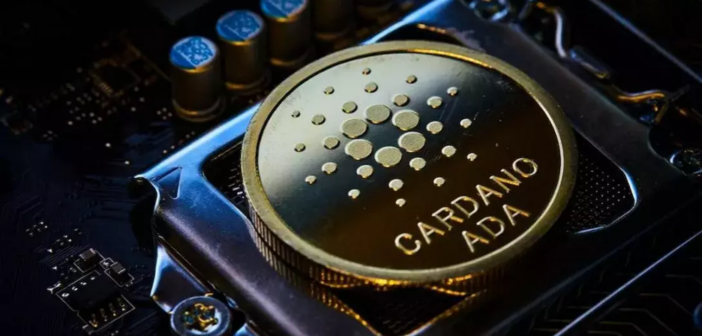As one of the largest and most actively developed blockchain networks, Cardano aims to create a platform that is secure, sustainable, and scalable enough to support global applications.
According to some Сardano price prediction 2025, if development progresses smoothly, Ada’s price could reach over £10. Key parts of realising Cardano’s potential involve having an effective governance model that aligns various stakeholders and enables the community to guide future development.
Cardano’s governance represents a novel decentralised approach where all ADA token holders can participate in making decisions about everything from network upgrades to funding allocations. This helps create alignment within the community and ensures updates serve the users’ best interests.
Understanding Cardano’s Governance Model
Cardano’s governance model is encoded at the protocol level, meaning the decision-making processes are defined on-chain. It aims to achieve flexibility and inclusiveness by enabling ADA holders to actively shape future development through voting.
Stablecoins, such as Tether (USDT), play a crucial role in the decentralised financial ecosystem. With their value pegged to traditional fiat currencies, stablecoins provide a reliable bridge between traditional finance and blockchain. This integration aligns seamlessly with Cardano’s vision for decentralized governance. Buy Tether to experience firsthand the synergy between Cardano’s robust decision-making protocols and the stability offered by Tether in the ever-evolving crypto market.
Some key components of Cardano’s governance model include:
- Voting power – A stake-based voting system where users vote according to how many ADA tokens they hold, ensuring those with larger stakes have greater influence.
- Community submitted proposals – Anyone can submit funding requests or proposals for network upgrades which the community then evaluates and votes on, including initiatives like Project Catalyst and Cardano Midnight.
- Catalyst voting – Cardano’s DAO (decentralised autonomous organisation) that manages community funds and lets ADA holders vote on proposals to determine funding allocations.
- Voltaire era – The ultimate stage in Cardano’s roadmap delivering full decentralisation including voting mechanics and delegation capabilities.
By encoding governance in the protocol and requiring majority consent, Cardano avoids centralized control and ensures updates serve the community’s interests aligned to Satoshi Nakamoto’s original vision.
Community Participation Through Voting
Through Catalyst and Voltaire era implementations, Cardano token holders use their voting rights to evaluate proposals, determine funding, set development priorities, and upgrade network functionalities.
Some examples of community participation enabled by Cardano’s voting mechanisms include:
- Assessing proposals – The Catalyst system allows the submission of funding requests for anything that could contribute value to Cardano. Token holders assess the merits of these proposals and vote for which ones should receive financial support.
Project Catalyst represents one of the most ambitious real-world experiments in decentralised governance ever conducted. With over $60 million in community funds allocated through voter-directed treasury systems so far, it enables Cardano developers and innovators to propose and fund ideas that align with values of the Ada holder community.
The Catalyst voting process typically works in funding rounds centered around specific themes like scaling, interoperability, identity solutions etc. Participants can contribute proposals, which get evaluated for technical feasibility and community preference through structured assessment systems. Top-ranking proposals proceed to the final voting stage where Ada holders cast votes to determine how large a portion of the allocated funds each proposal receives.
This decentralised approach to determining project funding allocations is unprecedented for a global-scale blockchain network and allows direct community guidance over the Cardano ecosystem’s growth.
- Directing development – Beyond assessing funding requests, Ada holders also vote more broadly on network development priorities. By participating in Project Catalyst, the community directs where development resources focus.
- Upgrading protocols – Protocol upgrades for performance improvements, functionality expansions, and other changes will require majority votes. This puts development decisions directly in the hands of ADA token holders.
- Electing governance councils – Voltaire will enable decentralized governance councils to form that require votes and elections to select members. This community representation helps set overarching governance policies.
By voting on all these elements, Ada holders get to guide real-world Cardano applications and integrations that align with community values and needs.
The Role of Stake Pools in Governance
While individual token holders do participate in voting, stake pools are also critical players in Cardano’s governance.
A stake pool is an entity that stores ADA tokens from many users to participate in the proof-of-stake validation process. Beyond securing the network, they also take part in governance in the following ways:
- Delegating voting power – ADA holders can delegate their voting rights to trusted stake pool operators who then vote according to delegator preferences on major decisions.
- Informing users – Stake pools create awareness and inform token holders on upcoming votes, helping delegators make educated choices aligned with their interests.
- Voting with delegated stake – As trusted entities with delegated stake from thousands of users, stake pools command extremely high voting power. This huge influence requires ethical participation aligned to community preferences.
Beyond voting directly with delegated stake, stake pools also provide voter education through community discussions that helps individual token holders make more informed choices. Leading stake pools produce research and advice on the implications of parameter changes, funding grants, or other major governance decisions under community consideration. These analyses explain potential outcomes of various options to help delegators vote in their own interests.
Additionally, stake pool leaders actively take part in AMA (ask me anything) sessions, workshops and community calls to represent user concerns to Cardano developers and foundation representatives. They can thus transmit viewpoints and preferences of their delegators for better incorporation into network upgrades or new product launches.
By both conducting research to advise delegates, as well as directly interacting with Cardano’s parent company Emurgo, influential stake pools substantially impact the governance process.
By leveraging stake pools, even token holders with relatively small voting power can participate in governance by delegating their stake towards proposals and decisions they support.
Realising the Vision for “True” Decentralisation
While many blockchain projects promise decentralisation, Cardano’s governance model represents one of the most comprehensive attempts to deliver it in practice.
Handing decision-making powers to distributed stakeholders rather than a centralised entity requires robust systems and informed participants. Cardano focuses intensely on user education and community alignment so all stakeholders make choices that serve their shared interests.
Achieving true decentralisation requires more than establishing voting mechanics. It depends fundamentally on widespread user adoption combined with continuous community education on governance rights and responsibilities.
As more applications are deployed on Cardano in diverse fields like finance, supply chain tracking, healthcare, and more, exponentially larger numbers of users should be incentivised to participate in directing ecosystem development. As use cases expand, so do the range of stakeholders invested in Cardano’s advancement to suit their specialised needs through the governance process. Training and onboarding systems regarding how to leverage voting powers will also prove critical for maintaining responsible participation and mitigating misuse as adoption grows globally.
The overall vision is that governance decentralisation occurs in alignment with technology decentralisation – as network capabilities and use cases distribute across applications worldwide, so does distributed decision-making oversight over the Cardano blockchain spanning regions and industries.
If successful, true decentralisation of the Cardano network could set the precedent for community-run blockchains at a global scale. No longer dictated by founders or subject to profit-seeking centralised control, Cardano would become a self-sustaining, evolving ecosystem shaped by users.
With implications for finance, identity, supply chains, voting, healthcare, and more, getting governance right is critical for mass blockchain adoption. By enabling decentralised control, Cardano would help prove blockchain can scale beyond proofs of concept into the real world.
The Road Ahead for Cardano’s Governance
If all goes according to plan, Voltaire implementation will deliver advanced decentralisation capabilities in 2022 and beyond. This should expand community voting into more areas that shape real-world Cardano adoption.
However, even after Voltaire deployment, Cardano’s governance processes will continue evolving. Participation rates, voting mechanics, delegation models, and other dynamics must improve to create efficiency at greater scales.
Some potential governance innovations as Cardano develops further include:
- Higher community engagement – Improving voter turnout and education on using voting rights responsibly.
- Flexible voting mechanisms – Supporting various voting styles like quadratic, cumulative, or proxy voting for different scenarios.
- Decentralised apps integration – Apps and services building on Cardano could integrate governance models allowing their users voting powers.
- Interoperability protocols – Cross-chain interoperability solutions enabling decentralised governance across multiple interconnected blockchains.
As capabilities advance, decentralised control of Cardano will extend beyond protocol development into applications, enterprise integrations, financial systems, global trade, and even government services.
The path to full decentralisation is complex, but Cardano now has a functional framework aligned to community interests from which to evolve. If achieved, the impact on the blockchain industry and beyond could be immense as it finally unshackles infrastructure from centralised points of control. Cardano has an ambitious roadmap ahead but the coming years will prove whether decentralized governance can work at a global scale.




